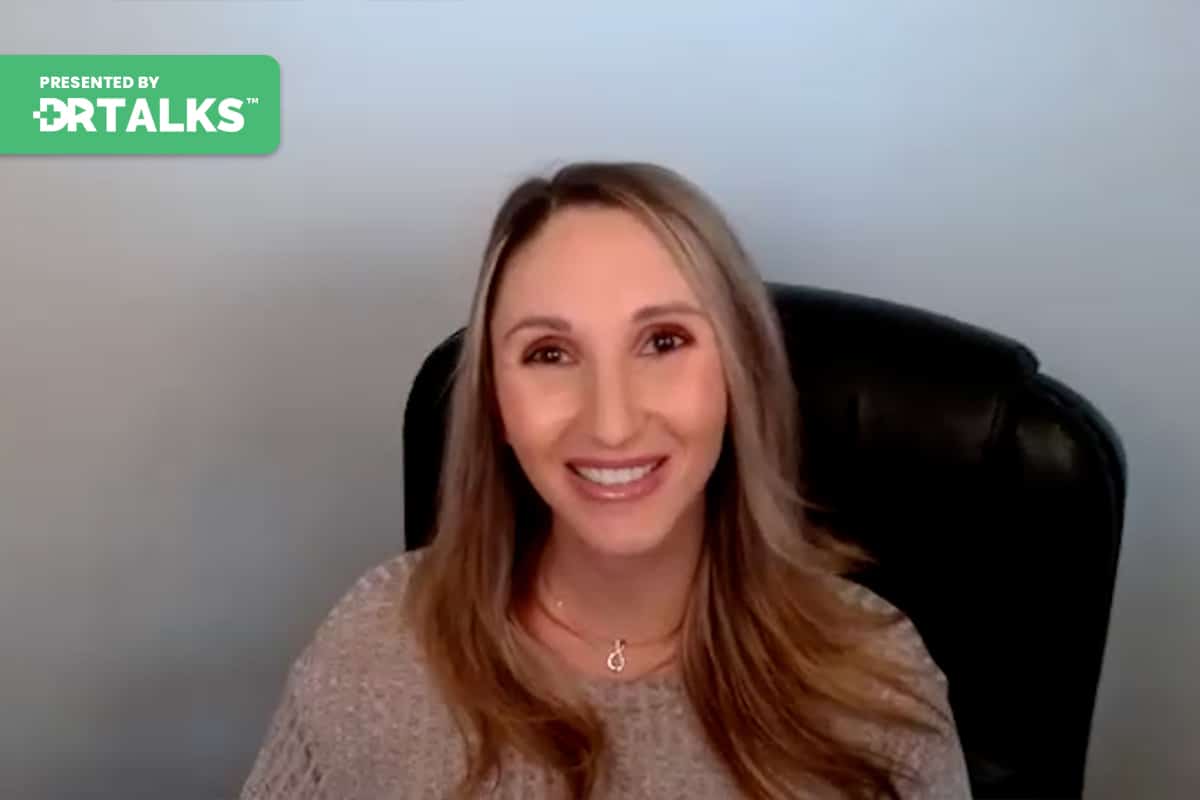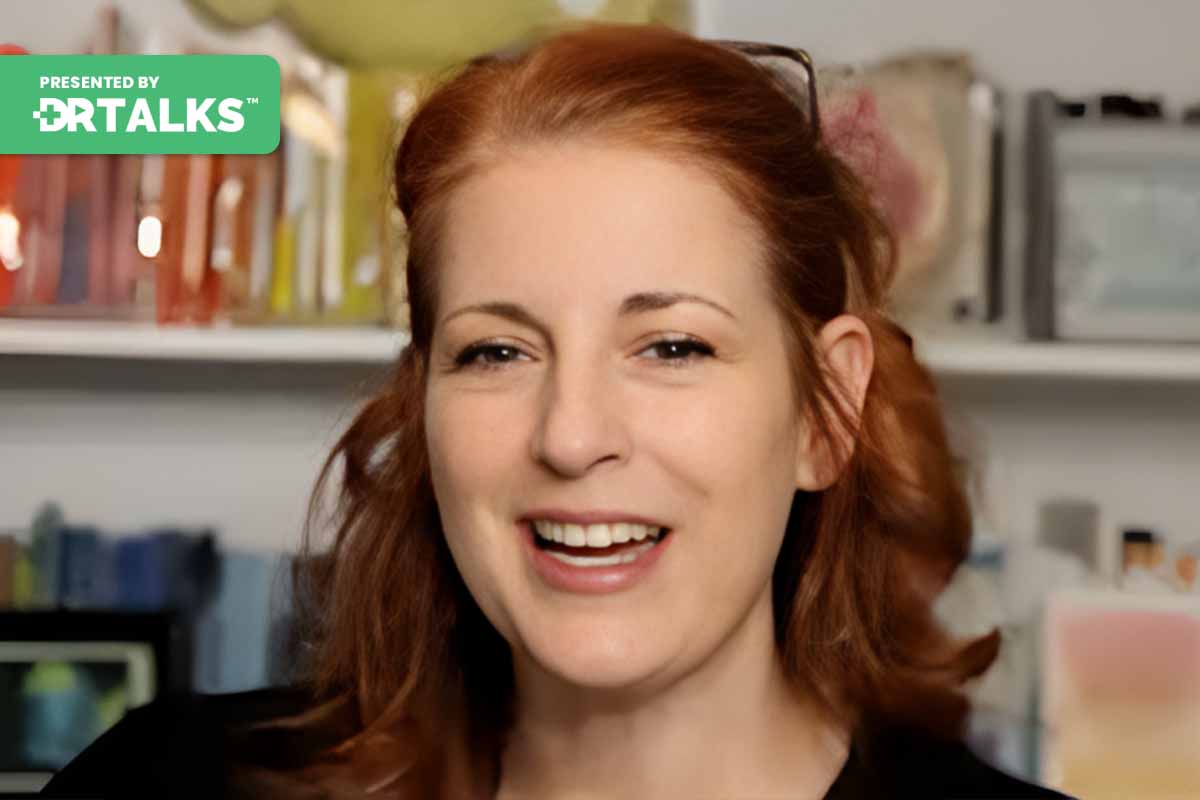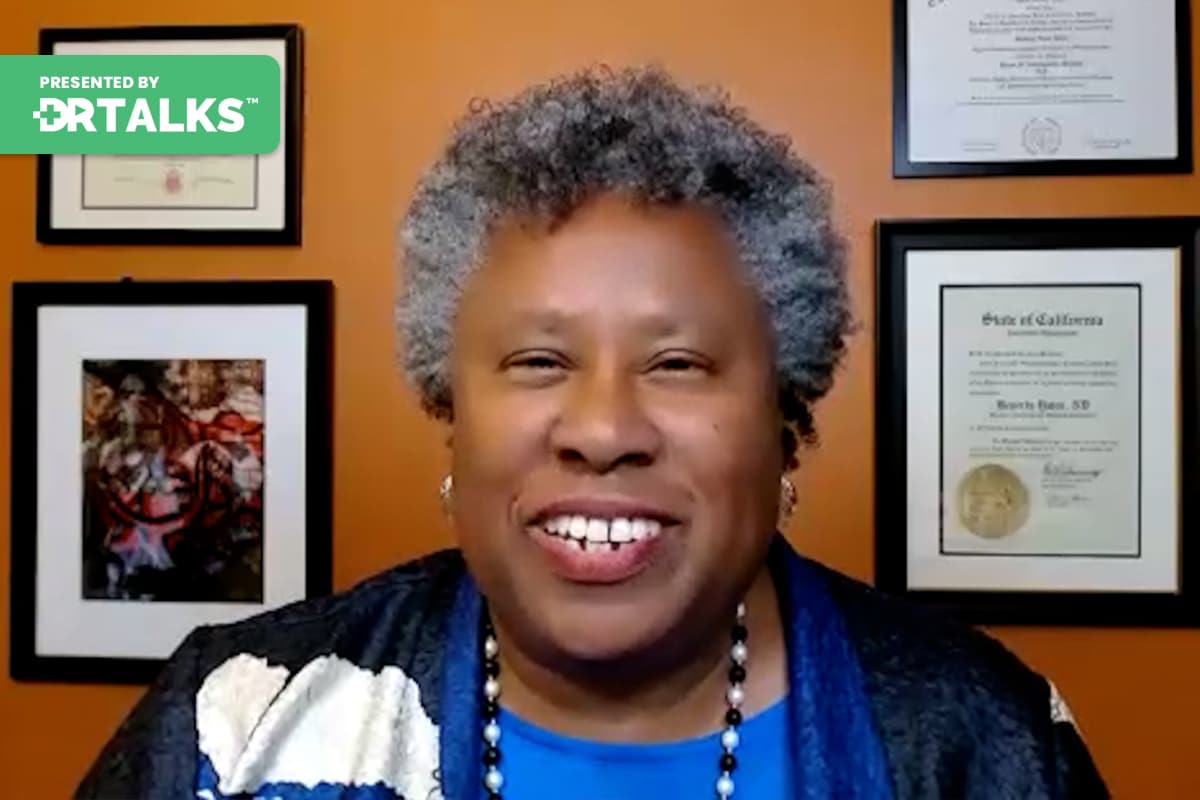Join the discussion below

Dr. Diane Mueller is the founder of My Libido Doc, an online community dedicated to helping women reclaim their desire. My Libido Doc provides education, community and health care services for women. Alongside her double doctorate in Naturopathic Medicine and Acupuncture, Dr. Diane extensively researches libido, pleasure and women's health... Read More

Dr. Sabrina Solt is a naturopathic medical doctor located in Scottsdale, AZ. She has been practicing regenerative and anti-aging medicine since 2013. Over the years, she has mastered various treatment modalities, such as prolotherapy, PRP, adipose and bone marrow derived stem cells, as well as birth tissue biologics such as... Read More
- Explore causes of sexual dysfunction, from hormonal imbalances to nervous system problems
- Understand how thorough patient assessment can pinpoint the root causes of dysfunction
- Learn about targeted approaches to restore balance and rejuvenate sexual health
- This video is part of the Solving Sexual Dysfunction Summit
Diane Mueller, ND, DAOM, LAc
Hey, everybody, welcome back to another episode of our Sexual Health Summit. I’m so excited to introduce you to our next guest, Dr. Sabrina Solt, a friend and colleague of mine, an amazing naturopathic doctor who’s going to talk to us not only about the root causes of sexual dysfunction but also about how we regenerate, how sexual dysfunction is connected to regenerative medicine, what that even means, some unique options for treatment of healing from the root causes of sexual dysfunction, and more things that you have not heard anywhere else on the summit. Welcome. I’m so happy to be spending time with you today.
Sabrina Solt, NMD
Thank you so much. I’m so excited to be here. I’m grateful you invited me in.
Diane Mueller, ND, DAOM, LAc
I thank you. Before we jump in, can you just give everybody an update, so to speak, on who you are, how you got involved in regenerative medicine, and why you’re passionate about the topic of sexual dysfunction? Can you just set the stage for us there?
Sabrina Solt, NMD
I’m Dr. Sabrina Solt. Like you said, I’m an active, empathic doctor. I currently have a practice in Scottsdale, Arizona, and we serve people from all over the country. We have people visit us, even internationally, for the work that we do to get to the root cause of all of these issues and the way that we perform our regenerative therapies. I got into regenerative medicine back in 2013, and it started with musculoskeletal applications. I treated a shoulder with pro-therapy, and I saw how I was able to help somebody fully heal without surgery or drugs. It was just like a gateway for me. After that, I was pretty much sold on the magic of it, and I realized that there are so many applications for it. To give a blanket summary, I tell people that there isn’t a part of the body that I haven’t treated with regenerative medicine, and you can use your imagination for that, from head to toe. The cool thing is that it works by getting to the root cause and truly healing that tissue, which is wonderful for patients because, again, it means that we can save them from years of taking prescription medications and all their crazy side effects or even the hazards of surgery. That’s where my love lies.
Diane Mueller, ND, DAOM, LAc
Amazing. I just love the term regenerative medicine from the standpoint that it gets to the roots of even what we learn in our education as naturopaths this is like the power of the body to regenerate like it’s possible when we give it the signals, the information, the data, it’s possible to avoid all these things like you’re talking about. I want to make sure that we spend a lot of our time today talking about these cool therapies, like pro-therapy. I’m sure some people know about that, and other people are like, What is that? We’ve got a lot of cool things to talk about. But just to set the stage, let’s take a step back. We’ve talked at the summit before about the root causes of sexual dysfunction, but can you just reset the stage? Because I know not all of our listeners have listened to every talk out there. I want to make sure this is very fluid, so you can just reset the stage. Like, what are some of the top things? We’re looking at the root cause of sexual dysfunction. Do people need to be considered?
Sabrina Solt, NMD
Yes, such a great question. It is a great lead to talk about these other therapies because we can understand how and why they’re working. I categorize sexual dysfunction. It’s divided into three different categories, and sometimes people can have a combination of one or more of these categories. The first is hormonal disruption. I’m sure you have a lot of amazing expert speakers talking about how hormones can decline in middle age, can decline due to environmental factors, and all that crazy stuff. But if our hormones aren’t balanced or at optimal ranges, we can deal with some degree of sexual dysfunction, both for men and women. The second thing is that there can be some disruption of the nervous system. For sexual function to happen seamlessly and to be able to go from arousal to orgasm, we need to be able to activate both parts of our nervous system, both the parasympathetic and sympathetic parts. There are a lot of things that can interfere with this, everything from certain medications to even having a drink to just being under chronic stress. All those things can negatively impact the nervous system and lead to sexual dysfunction. The third and final thing and this is where a lot of the regenerative therapies focus, has to do with blood flow. People miss this at the start. Men, it’s pretty obvious. We get that very obvious physical representation of that blood flow when an erection is achieved. We think that’s part of sexual health. But when females are concerned, that’s a blood flow issue as well. A lot of people don’t know this, but female lubrication is an ultrafiltration of blood plasma. We need to be able to get adequate blood flow to that tissue for it to secrete across that membrane and produce lubrication for just the very basic initial parts of our arousal system. Those are the three main categories that these dysfunctions can fall into. The hormones, the nerves, and the blood flow
Diane Mueller, ND, DAOM, LAc
Yes, it’s a good reminder that all of these areas are so interconnected to the rest of our body and that oftentimes, with libido and sexual dysfunction, it’s so easy to be like at certain points of life for people to be like, “Oh, well, this doesn’t matter to me as much as it used to.” There are several problems with that. But one of them is like, relate it to what you’re talking about. If you’re having these problems, it’s a sign of something else, such as blood flow, a sign of nerves, or a sign of hormones. These things don’t just affect our genitals; they affect everything. It’s a good way of setting the stage that you did. You have some of the coolest treatments. Do you think it would be beneficial to break these down into some of the cool treatment options you have from stem cells, the peptide process, and all these other regenerative therapies? Should we break them down and talk about them in categories to say, if it’s a circulatory route, for example, of our circuitry root cause, I should say, what are some of the unique therapies that you have from a regenerative standpoint that would fit into each of these categories? Should we talk about it from that standpoint?
Sabrina Solt, NMD
We can talk about it however you want. That sounds fine. We can dive into the circulatory stuff first. That’s super cool.
Diane Mueller, ND, DAOM, LAc
Go ahead.
Sabrina Solt, NMD
When we’re talking about circulation issues, there are a couple of things to consider. The first is, is there actual damage to the blood vessels themselves? This is where things like PRP and actual stem cell therapy shine because they can regenerate the vessels. Now, we see this a lot in patients who have type 2 diabetes, and it has to do with, again, the same vessel damage that occurs to create the neuropathy. We can also use the stem cells to treat that, or the PRP to treat that as well. For those who don’t know what PRP or stem cells are, PRP stands for platelet-rich plasma and is a product that we get from our blood during a simple blood draw procedure. The amount of blood that we take is about 10th of what you’d given a blood donation. not a lot by any means, but certainly enough for us to work with. Then, of course, we have to centrifuge it, prepare it, and then inject it into the area. Now, before people get so freaked out over needles in those areas, I do have to mention that it is done as gently as we can, with the smallest needle we can use and ample numbing cream. I’ve never had anybody tap out. We know it works very well. We get some amazing results with that. Now, stem cell therapy can get a little bit more nuanced. Currently, in the United States, there are a couple of ways that we can get stem cells for clinical use. The first way is by taking them from your own body. It comes from either your bone marrow or your fat tissue. There are also products on the market that are birth tissue products. Products that are created from either umbilical cord tissue, umbilical cord blood, or amniotic fluid. There is a divide in the stem cell space between people who will tell you, Yes, these do contain stem cells, and people who will say, No, these can’t contain stem cells. They don’t contain stem cells. The truth is that it probably lies somewhere in the middle. Some of the companies will do processing and whatnot to try to maintain the stem cells in there. But a lot of the companies don’t, and just has to do with the fact that they have to undergo cryopreservation and irradiation before they make their way to the consumer, which does put a lot of stress on the stem cells and possibly cause death, doesn’t mean these products are bad. They can still be very effective because they’re still in the presence of a lot of growth factors, which means they’re going to behave similarly to the way PRP does. But ultimately, again, it comes down to choice, too. We like to use the actual live stem cells that we can get from our bodies. that same-day procedure. questions on any of that.
Diane Mueller, ND, DAOM, LAc
Yes. I’m so glad you’re talking about some of those differences, first of all, because there is a lot of confusion on the market. I hear that, too, like chatter between these two different schools of thought on stem cells. One of the questions that might come up is a little bit more on growth factors, for example. You’re talking about stem cells, you’re talking about PRP, and you’re talking about these things that are going to increase these growth factors in the body. What is that going to do from a circulation-slash-sexual dysfunction perspective specifically?
Sabrina Solt, NMD
They will work to rebuild those blood vessels and increase blood flow. They’ll even do a process called angiogenesis where they can build new blood vessels, which is amazing. That’s exactly what we want because not only is that going to heal the arousal mechanism, but by simply bringing more blood flow to the area, you’re allowing the transport of more nutrients and all the other healing factors that are already present in your own body to occur even better. We love it for all those reasons, and a lot of the time we can even get away with just one treatment. Very rare circumstances or very severe circumstances, I should say, may warrant more than one. But a lot of the time, many of our patients get anywhere from a 60 to 80% improvement, if not more, after just one session.
Diane Mueller, ND, DAOM, LAc
Then are you seeing, for example, with just one session in males, say, a circulatory issue that might lead to erectile dysfunction or, from a female standpoint, a circulatory issue that might lead to something like vaginal dryness? Are you seeing that sometimes, with one treatment, those symptoms are completely eradicated?
Sabrina Solt, NMD
A lot of the time that happens within the first 30 days to six weeks, so relatively fast. Some people have been dealing with this stuff for years, but it can happen pretty quickly. Now, of course, I should say this: That’s not the only thing we’re doing. If somebody is coming to us, we are doing our due diligence, taking their history, and figuring out if we need to add in supplements. Do we need to adjust our hormones? Do we need to remove some toxicity from your life? The last thing I want is for some of you to think that the stem cell is this magic bullet that’s going to fix all the issues that we have and take any ownership over it. If you’re coming to us and it’s a circulatory issue caused by type 2 diabetes and you’re not ready to quit that sugar, there’s not going to be a lot that we can do to help.
Diane Mueller, ND, DAOM, LAc
Yes. Thank you for saying that. I imagine you hear in your practice, it’s a similar thing that I do in mine, which is people wanting that like one root cause around like, oh, I found the thing instead of that orientation to like we found the things that are at the root there. I imagine then I know the answer to this question, but we should just make sure, which is from a standpoint of you’re working on all these routes, somebody gets stem cells, somebody gets PRP. Whatever you decide from a regenerative standpoint is correct. They say they get great results with one treatment. What are you doing from a maintenance standpoint? Is it mostly then working on these other routes the blood sugar, the hormones, the other types of root causes that come up? Or is there something else that you see come up a lot from a making sure the treatment lasts perspective?
Sabrina Solt, NMD
Oh, that’s such a good question. Ultimately, the first thing I want to mention is that when we’re talking about anything that we’re regenerating or healing, generally speaking, the healing that you get is yours to keep. Just like if you’ve ever gotten a cut on your body. Everything that’s ever healed on your body was technically a stem cell-mediated response or stem cell-mediated process, and you never worried about a scar just randomly reopening again in the future because the healing that you got was yours to keep. Now, that doesn’t mean that you’re never going to fall again, and you might not get another cut in that area. similar thing. If you’re going to go back to the behaviors, habits, and things that got you there in the first place, there is a chance that you can bring them back. But if you maintain all the things that we’re telling you to do—keep a healthy diet, get some exercise, get some sunlight, get rest, reduce your stress—all the things that we preach all day long as you’re doing those things again, the healing that you get is going to generally be yours to keep. Now, of course, we’re all degenerating. We’ve all been degenerating since we were born, and nobody likes to have that conversation either, but it’s the truth. They are still going to be just that natural and like that. It’s just going to happen that way. Again, the more that you can do in your personal life, in your own decisions that you make daily, just continue to promote health. The longer your results will be, quote-unquote last. But again, they’re not just going to randomly go away, aren’t they?
Diane Mueller, ND, DAOM, LAc
Yes, that makes perfect sense. then when would you give advice to somebody? I know this is a very difficult question because it’s so unique from person to person, but are there any big rules that you would say to follow to decide if PRP is going to help with regeneration for somebody versus somebody like stem cells? How are you determining that? How does someone know what to ask for? Think about those things.
Sabrina Solt, NMD
Such a good question! We do offer complimentary discovery calls where we go into this with somebody. a couple of things that we consider. We have a few hard qualification questions, so we won’t treat anybody with active cancer. We won’t treat anybody who is a smoker because cigarettes kill stem cells, and that is certain. There are a few other things, as far as medications, that you might have taken or have been taking that we need you to be off of. But those are big ones. Another one that we have, and this might rub people the wrong way, but we do have a BMI requirement. We do want people to be below 30 on BMI. This has to do with don’t shoot the messenger. But it is a fact that the adipose tissue, once it gets into an obese state, gives off more inflammatory cytokines than the fat tissue of a lean person. What you’re doing with that is that you’re trying to heal a system—an environment that’s toxic to begin with. Again, we can’t heal in a toxic environment, so we need to be able to work with that patient, which we often do to get them down to a physical state that’s going to be more conducive to healing. That’s another benchmark for us. But when it comes to deciding between PRP and stem cells, it has to do with two things. That’s your age and the severity of the situation that you’re in. If you’re relatively young and in pretty decent health, we can probably get away with doing PRP, and of course, if it’s pretty mild, but if it’s very severe, you’re much older. We’re talking over 60. We generally have to do stem cells at that point to get that regeneration to happen.
Diane Mueller, ND, DAOM, LAc
it’s helpful. I imagine, too, that you’re also seeing certain links between them; it’s like you’re talking about prolonged therapy even for pain. That was for pain, is that correct? Yes. You’re talking; we’re talking about stuff like that. Another thing that is further down the road but connected is that people who are in pain—back pain, frozen shoulder pain—nobody feels like generally having sex when it’s difficult to move. It’s like maybe it’s not a direct cause of, say, erectile dysfunction, vaginal atrophy, or those sorts of things. But from a desire perspective, like with pain, it’s like, Let me just figure out how to get through the day and survive, not have sex and thrive and enjoy pleasure. Do you want to talk at all, too, about some of these things? Because I know from just talking to other people that I’ve done some of these therapies that, as you said, these therapies can work when surgery is the only option and sometimes when surgery doesn’t even work. Do you want to talk a little bit about that? It is still linked to the sexual dysfunction piece—that pain and the inability to thrive well.
Sabrina Solt, NMD
All the time. Yes, we treat a ton of patients with musculoskeletal pain disorders. Things like low back pain can completely put you out for that. You can just get into a comfortable position for intercourse to occur. Knee pain, neck pain, shoulder pain, hip pain, leg pain—you name it, it can affect it. The other thing that people may not be paying attention to is that a lot of these pain medications can dull more than just the pain. They can dull sensations. They can dull your nervous system completely so that you can’t go into that parasympathetic-to-sympathetic transition. All these things can affect a person’s desire and, of course, their physical ability to engage.
Diane Mueller, ND, DAOM, LAc
Yes, that makes a lot of sense. I want to be clear because I wasn’t clear in your explanation. Do you tend to have a preferred way of using stem cells, like collecting from the embryonic fluid or the umbilical cord versus, say, the bone? You have a way.
Sabrina Solt, NMD
Yes, my preference is from a patient’s fat tissue, so we don’t want to, but we would still want some fat if we wanted it in our Goldilocks amount. Generally speaking, what I tell people is that if we can pinch about two sticks of butter on either your lower abdomen or your love handle area, that’s the perfect amount. That’s what we need. This is why there is so much research surrounding just how effective the stem cells from adipose tissue are because they are the mesenchymal stem cells, which are the ones that we want to work within a clinical setting. It’s great because we can guarantee that they are alive. We can guarantee that there is no risk of anything like disease, transmission, or rejection because we’re taking them from your tissue and giving them back to you. It is done as a same-day procedure. We don’t even have to put you under. We do, of course, have very generous local numbing in the area. But we don’t have to put you to sleep. In a total of about three hours from start to finish, we take out your stem cells, process them, give them back to you, and you get to go home and relax.
Diane Mueller, ND, DAOM, LAc
It’s just another example of how the power to heal is like so much of it is within when we direct the body the way and give the body the messengers. I love that. Let’s move on and talk a little bit about peptides. What are your favorite peptides? The world of peptides is growing continually, and we’re learning so much every day and discovering new ones on the market. But from a true sexual health perspective as well as the root causes of sexual dysfunction, what are you seeing as some of the most predominant peptides that are effective in your practice?
Sabrina Solt, NMD
Yes. Let’s start with females because females can have complex libido issues, which I don’t know. I have to explain to you that I know you are an expert in this area. This is one of the peptides that I like to use for women, and this is when we’ve tried other stuff first because I have a hierarchy of things that I go through, and it’s in my three-step framework. It’s the hormones, it’s the nerves, and it’s the blood flow. If we’ve dialed in her hormones, we’ve got her testosterone, her estrogen, and her progesterone; they’re all optimized. Her cortisol is low. We’ve got the blood flow stuff worked out. We have the nerve stuff worked out. One of the things that I like to look at is a peptide called PT141, this is a peptide that can be delivered as a subcutaneous injection. It can also be delivered as a nasal spray. Most common side effect, or I won’t even call it a side effect. Some people can feel nauseous from it. It doesn’t happen to everyone. But it’s some people. But what I can do is upregulate a woman’s desire, and it can produce results in as little as a couple of hours—some women even faster. Sometimes this can just be the initiation that they need to start to get it going. What I found in clinical practice, and maybe you’ve seen the same thing too, is that sometimes women can go such long periods without having intercourse that they forget that it’s a good thing, that it’s something they want to engage in, that it’s something that can be safe, fun, and enjoyable. Sometimes the use of the PT141 can get them over that hump, where I mean, no pun intended with that, but get them over that barrier where that now it becomes a reminder like, This is what it feels like to want to engage, to feel aroused, to feel like I want to pursue intimacy. It can be a short-term thing that we use in that regard.
Diane Mueller, ND, DAOM, LAc
Yes, it’s amazing. You see so much more results. It sounds like there are so many more results with women versus men for the PT141, for sure.
Sabrina Solt, NMD
I feel like men don’t have the same root cause of forgetting what it’s like to engage in intercourse and need that reminder. We use that generally for that. Now, men, there are a couple of peptides that I consider for men, and it’s in men who have a diagnosis of Peyronie’s in addition to erectile dysfunction. Of course, we work on other stuff, but there are two peptides that I’ll try to use for men for that. One of them is called BPC157, which we refer to as a general healing peptide. It can work on blood flow, it can work on tissue, and it can do a lot of stuff. Sometimes with Peyronie’s, if we’ve already done the injections, we’ve already done the shockwave, trying to break down that tissue if there is still just some stuff lingering. The addition of BPC157 can sometimes be very helpful for just helping to overall remodel and heal that area. The second similar thing is called the copper peptide. GHK-Cu and the copper peptide are amazing at collagen synthesis and are just producing more effects on the skin. Again, great for helping to remodel any of scar tissue that might be present in Peyronie’s patients.
Diane Mueller, ND, DAOM, LAc
Amazing. Another thing that is important to talk about is that I’m hearing this happen a little bit for my patients around just going online, and even some people buying injectables directly to consumers. I don’t know exactly where this is happening, but there is an element of not understanding the importance of the quality of these things, the safety profile, and all of that. Can we talk a little bit about, like, the sourcing of those and how important that is to consider?
Sabrina Solt, NMD
Yes. Oh my gosh, the majority of peptides are prescription-only. However, as you’re stating, there are websites where people can order directly from the consumers under the guise of research purposes only. Where we get into trouble with this is that we can’t guarantee sterility; we can’t guarantee potency. Of course, we just don’t know how you’re administering it at home. Where did you source your needles from? Where did you source your syringes from? Are you using proper, aseptic,, or sterile techniques when you’re doing these administrations? Then, of course, where are you getting your protocols from? There can be a lot of stuff that goes wrong with it. I’m sure there are people out there who have experienced great success with it. They’re not coming into my office, but I have heard pretty intense horror stories of people who have suffered pretty severe adverse events from using these peptides. Now, ultimately, I understand why
people would do it. It’s often cheaper; you don’t have to deal with a doctor’s visit; you don’t have to; you can be your provider; but I would just still urge immense caution and try to work with the provider. Now, one of the things you can get is BPC157 directly from the consumers through pretty reputable companies. That’s one of the ones that’s safe, but that’s only in the oral version. There are some products out there that contain copper peptide for topical use, like certain creams and whatnot, in the beauty industry. But you’re not going to be able to find the PT141, the injectable BPC, or the injectable copper peptide without first talking to your doctor, and here’s the other thing, too. When you’re working with a doctor who’s trying to solve these problems for you, we’re looking at the whole picture. I also don’t think that peptides are another miracle cure or that they are worth the time, and the trouble and the cost of the other stuff aren’t dialed in. First, they’re the cherry on top of the cake; let’s dial in everything else, and then let’s amplify it and get things to the next level. That’s what I use peptides for, at least.
Diane Mueller, ND, DAOM, LAc
Yes. That’s a huge thing. There are two huge things that I hope everybody’s taking away from this conversation: one being that everything you’re doing in the clinic is like you’re doing so many different things to get to the root causes, and it’s all of these, this approach where you’re looking for all these different things that are getting the results that combined with the cherries on top. All these unique therapies get people over that portion when other things aren’t working; they just get people over that hump, like you said. Then what about any peptides that are more directed toward circulation and getting blood flow to the genitals? Since that is such a common root cause, are there any peptides you use more specifically for circulation?
Sabrina Solt, NMD
There’s one peptide called TB500 that’s a great peptide for amplifying circulation pretty much anywhere in the body. We can use it beyond sexual dysfunction; we can use it for joint issues, muscle cell issues, you name it. It’s just phenomenal for that. I do want to make an honorable mention of some of the growth hormone-releasing peptides. Things like sermorelin- CJC1295 are just phenomenal for getting us that increase in our growth hormone levels. Now you can pop into Google benefits of growth hormone. You’re going to see this beautiful list of, like, the promised land. It is amazing. Of course, sexual function is one thing that gets looped in there with that, but it’s not the main thing that that peptide is going to do. But it is something that I like to stack up when we’re trying to do it again—the cherry on top of optimization. People who are already working out, people who are already eating healthy, people who already have their hormones dialed in—you throw in one of these growth hormone peptides, and now all of a sudden you’ve got better hair, you’ve got better skin, and you have more energy. Your brain’s just like a fire. You’re feeling so good. Of course, sexual function can go up another level because we’re getting more blood flow and all that good stuff.
Diane Mueller, ND, DAOM, LAc
Then what about the nervous system? Anything that you’re seeing that you’re using to calm the nervous system, to balance the parasympathetic and sympathetic components of the autonomic nervous system—anything you’re doing there that’s super unique
Sabrina Solt, NMD
I don’t know if it’s unique, but there is something that I use, and it’s not a peptide; it’s a hormone, but it’s oxytocin.
Diane Mueller, ND, DAOM, LAc
Yes.
Sabrina Solt, NMD
Yes, I’m sure. I don’t know if you have someone else talk about it as well, but here it is. Yes, I’ll tell you who I love this for. I love this for the working woman who has a high-stress job and who comes home at the end of the day. The last thing she wants to do is, like, look at her husband. She has to put on those sweatpants just to sit down in front of the TV and have a snack, and, like, intimacy is the last thing on her mind. This is the person that I’m like: on your way home, you’re popping that oxytocin lozenge, or you’re taking that nasal spray. It’s that when you get home, you are relaxed enough that if the invitation is there or if you want to initiate that intimacy with your partner, you’re ready to do it. We’re bypassing, getting to the oxytocin and lovey feeling by just giving it away. then, of course, you’re still going to get that natural oxytocin release once you start to engage in intimacy, which is just like a chef’s kiss, cherry on top.
Diane Mueller, ND, DAOM, LAc
Yes, I can tell you from my personal experience that I use a nasal spray of oxytocin that way, and it’s phenomenal. It’s not, oh, at all. It’s like coming home from a very long day, like you’re talking about. It’s such an instant state shift that is so palpable and so helpful for, like, both. I feel like the internal stress system as well as a relationship. I’m so glad you brought that up. No, but we haven’t talked about that yet.
Sabrina Solt, NMD
Yes, as far as settling the nervous system goes, I find it is just like this simple hack that takes you from stress to not stress. We even keep it in the clinic for our patients who get that white-coat hypertension. We keep the lozenges. If we start noticing that they’re getting a little high blood pressure before or after a procedure, because, again, we do a lot of procedures, hit them with that oxytocin. They get to relax in a recliner, and it brings things all back into a neutral state. It’s just beautiful.
Diane Mueller, ND, DAOM, LAc
Yes. I love that so much, whether anything that you feel like we haven’t covered today and this topic of obviously there is so much we haven’t covered, but anything that you feel like is super important. We have to say this: This is important for people to understand.
Sabrina Solt, NMD
The only thing that I would like to just give an honorable mention to is the use of shockwave therapy for a lot of sexual dysfunction. What’s cool is that the shockwave has come a long way. It’s been around for years, but we’ve only recently been utilizing it for sexual dysfunction, and it can work phenomenally well. We start people in anywhere from six to 12 sessions, twice a week, sometimes three times a week. There are even home devices that people can purchase now, which is amazing. You don’t need to walk into a doctor’s office. You do it in the comfort of your own home. But what Shockwave is cool at doing is causing micro-trauma to those blood vessels, which encourages your body to release its own stem cells, release its own growth factors, and start that healing and remodeling process. This is, again, at home; possibly if you bought those at-home devices, regenerative medicine in a certain way. I do like that as an option for some people, but only if it’s mild in severity. For men with mild erectile dysfunction and even some women, especially if you’re just getting that vaginal dryness, that can be a great option for you as well.
Diane Mueller, ND, DAOM, LAc
I know people are wondering if it’s painful. What is the answer?
Sabrina Solt, NMD
No, not painful at all. You don’t even feel it. You shouldn’t feel it in any way if it’s performed properly; maybe just a slight tapping, but that’s it. No actual shocks are being delivered.
Diane Mueller, ND, DAOM, LAc
I want to make sure everybody knows how to get a hold of you. You have a giveaway that is on the summit platform here that I want to make sure that people know about. Can you tell us about all of that, please?
Sabrina Solt, NMD
Yes, I have a guide for the guys out there and women; this can apply to you as well. But are the top ten boner killers hiding in your home? Give that a download, and hopefully, you can learn something. It’s just a simple guide to read through if you want to find out more about our work. Our website is stemcelltherapypro.com. Again, we are located in Scottsdale, Arizona. We do have patients who visit us from all over the country and even internationally, and we would love to work with you if you think it’d be a good thing for all of us to work together.
Diane Mueller, ND, DAOM, LAc
Perfect. Awesome. Thank you so much for your time today. Dr.Solt. It’s been a true pleasure, and thank you all for listening to another episode. I’m excited to see everybody at our next interview.
Sabrina Solt, NMD
Thank you so much.
Downloads










